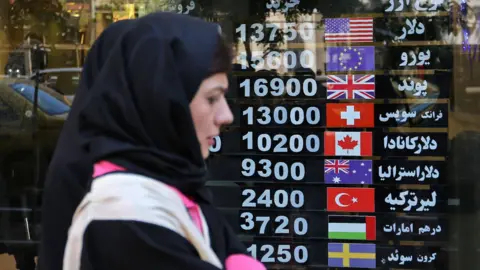 AFP
AFPThe United States reinstated economic sanctions on Iran after President Donald Trump abandoned a landmark nuclear deal in May 2018.
Mr Trump says he wants to apply “maximum pressure” on the government in Tehran to compel it to renegotiate the accord. But Iran’s leaders have remained defiant.
The substantial impact the sanctions have had on the country is clear, and the economic hardship Iranians are facing helped trigger widespread protests in November 2019 that were brutally quashed by the authorities.
The economy has fallen into a deep recession
Iran’s economy was badly affected for several years by sanctions imposed by the international community over the country’s nuclear programme.
In 2015, President Hassan Rouhani agreed a deal with the US and five other world powers to limit Iranian nuclear activities in return for the lifting of those sanctions.
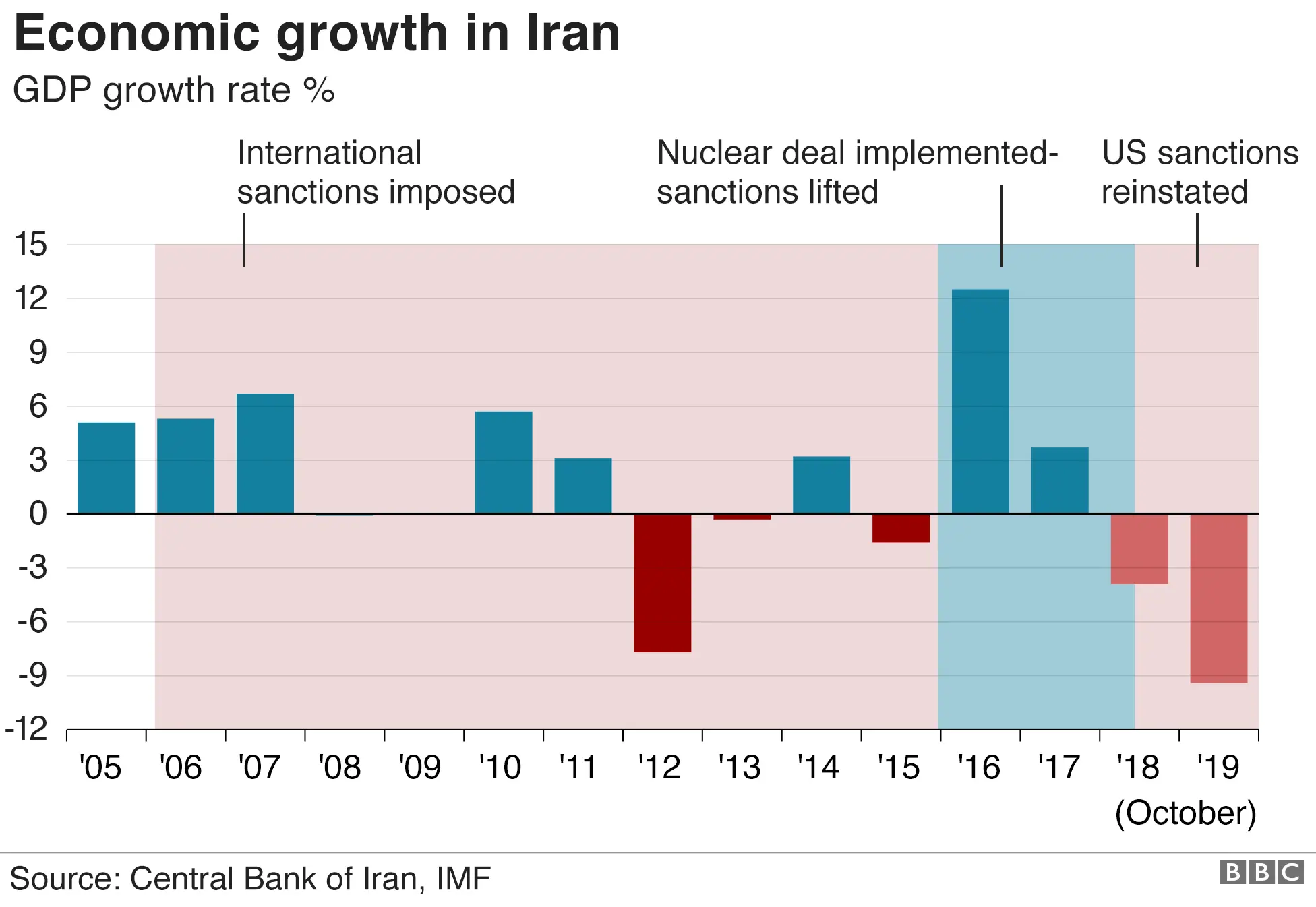

The following year, after the deal was implemented, Iran’s economy bounced back and GDP grew 12.3%, according to the Central Bank of Iran.
But much of that growth was attributed to the oil and gas industry, and the recoveries of other sectors were not as significant as many Iranians had hoped.
Growth fell back to 3.7% in 2017, helping to fuel the economic discontent that led to the biggest anti-government protests in Iran for almost a decade that December.
The reinstatement of US sanctions in 2018 – particularly those imposed on the energy, shipping and financial sectors that November – caused foreign investment to dry up and hit oil exports. The sanctions bar US companies from trading with Iran, but also with foreign firms or countries that are dealing with Iran.
In May 2019, Mr Trump ended exemptions from US secondary sanctions – such as exclusion from US markets – for major importers of Iranian oil and tightened restrictions on the Iranian banking sector. He said the decision was “intended to bring Iran’s oil exports to zero, denying the regime its principal source of revenue”.
The IMF is forecasting zero growth in 2020, which would support Mr Rouhani’s assertion in October that Iran has ridden out “the storm” caused by the sanctions.
Oil exports have plummeted


At the start of 2018, Iran’s crude oil production reached 3.8 million barrels per day (bpd), according to data gathered from secondary sources by the Organization of the Petroleum Exporting Countries (Opec). The country was exporting about 2.3 million bpd.
Most of the oil was bought by eight countries or territories that were granted six-month exemptions by the US when sanctions on the Iranian energy sector took effect – China, India, Japan, South Korea, Taiwan, Turkey, Greece and Italy.
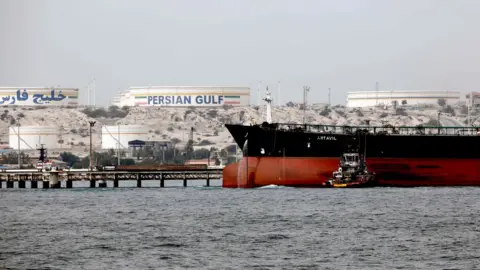 AFP
AFPA condition of the waivers was that the importers reduce their purchases of Iranian oil, and by April 2019 Iran’s oil exports had fallen to 1 million bpd on average, according to Bloomberg. That reduced the government’s revenue by billions of dollars.
Two months later, President Trump decided to allow the exemptions to expire and declared that he “intended to bring Iran’s oil exports to zero”.
By October 2019, Iran’s crude oil production had fallen to 2.1 million bpd on average, according to Opec’s data. Bloomberg reported that only 260,000 bpd on average was being exported.
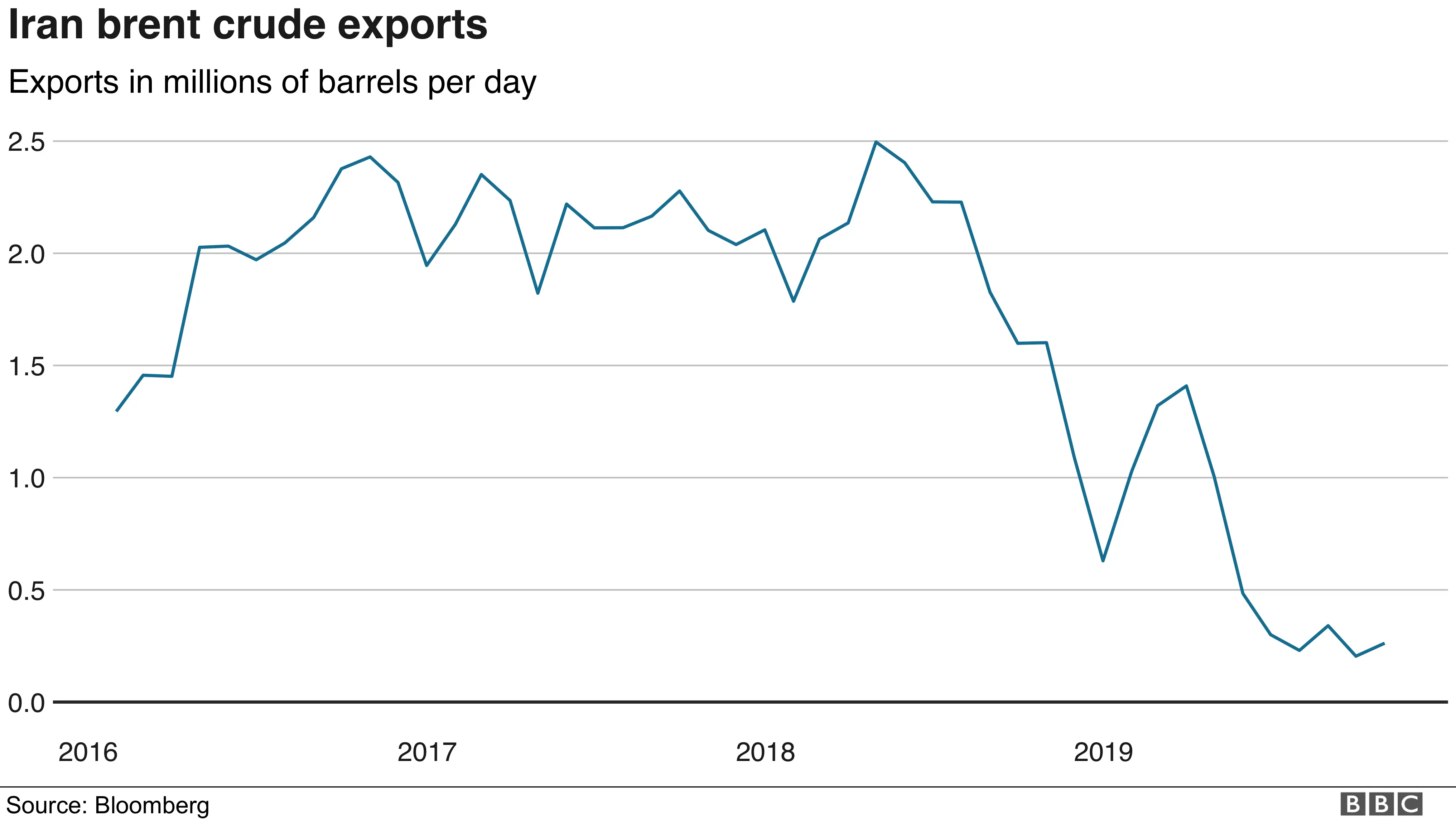

However, analysts have said the figure may not reflect actual deliveries due to reported activities by Iran and its customers to conceal purchases or avoid tracking of tankers.
Iranian tankers have been accused of flouting international rules by turning off their Automatic Identification System (AIS) transponders. Iran is also said to frequently conduct ship-to-ship transfers to move oil and oil products.
The plummeting oil sales have also led to a significant fall in Iran’s foreign exchange earnings. The IMF estimates that Iran’s reserves of foreign currency have been reduced to $86bn – 20% below their level in 2013.
A senior US official, Brian Hook, said in December 2019 that he believed Iran had access to only 10% of those reserves because of restrictions on its financial sector, and that as a result it would struggle to prop up its currency and prevent inflation.
The rial has halved in value
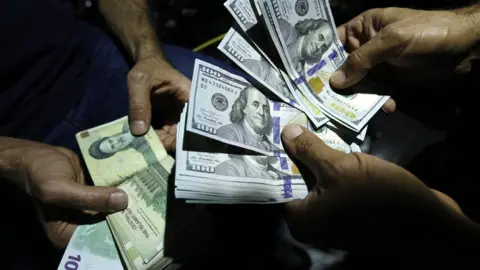 AFP
AFPPresident Rouhani kept the Iranian currency stable for almost four years. But it has lost 50% of its value against the US dollar on the unofficial market since the US abandoned the nuclear deal, according to foreign exchange websites.
The fixed official rate of 42,000 rials to the dollar is used for a limited range of transactions, so most Iranians rely on currency traders. Bonbast.com reported that traders were offering 13,650 rials to the dollar in early December 2019.


The rial’s slide has been attributed to Iran’s economic problems and a high demand for foreign currency among ordinary Iranians who have seen the value of their savings eroded and their purchasing power cut sharply.
The rial has regained some of its value since September 2018, when the Central Bank of Iran released more dollars into the market and authorities cracked down on currency dealers as prices reached a record low of 176,000 to the dollar.
Iran’s currency woes have also led to shortages of imported goods and products that are made with raw materials from abroad, most notably babies’ nappies.
Living costs have risen dramatically
 AFP
AFP
President Rouhani managed to get inflation down to 9% in 2017. But the IMF estimated that it soared to 30.5% in 2018 and projected that it would reach 35.7% in 2019.
The price rises led to long queues at government-subsidised grocery shops, particularly for rationed meat. In an attempt to lower prices, the government banned livestock exports, flew in hundreds of thousands of cows and sheep from abroad.
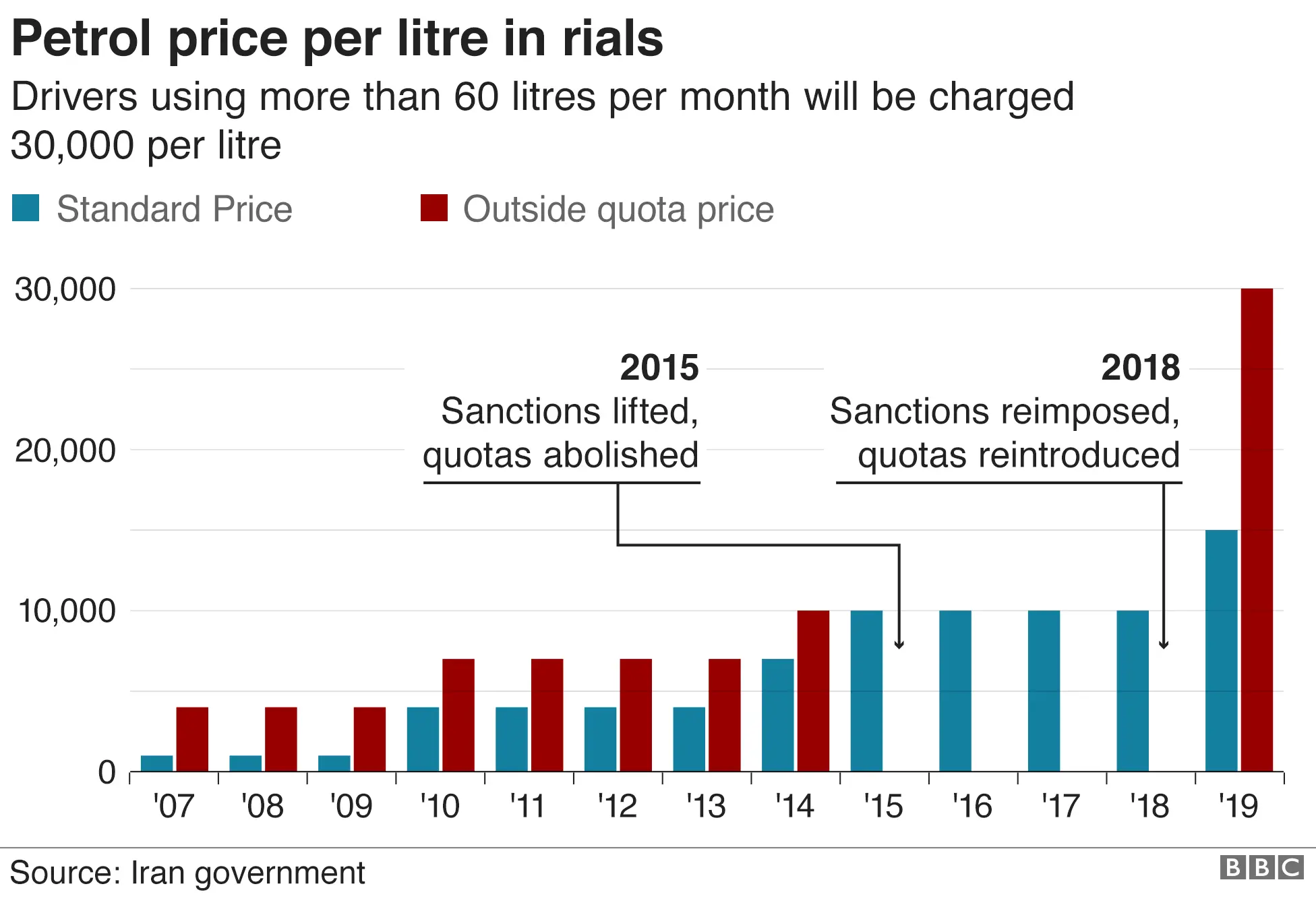

In November 2019, the government unexpectedly announced it was cutting petrol subsidies. It said the price of petrol would rise by 50% to 15,000 rials a litre ($0.12; £0.09 at the unofficial market exchange rate), and that drivers of private cars would be allowed to purchase only 60 litres each month before the price rose to 30,000 rials.
Mr Rouhani said the $2.5bn in savings would allow the government to provide additional help to 18 million families. But the price rises caused widespread anger, and hundreds of thousands of people took to the streets across Iran.
A crackdown by security forces left at least 208 people dead and thousands injured, according to Amnesty International. The government dismissed such figures as “utter lies”.








